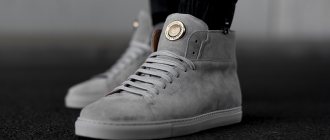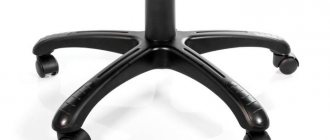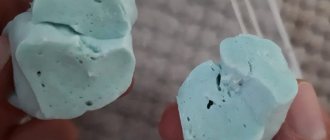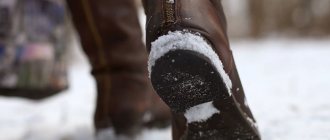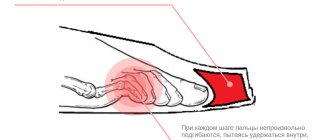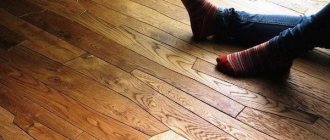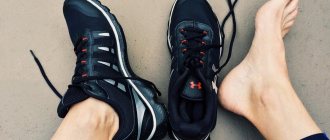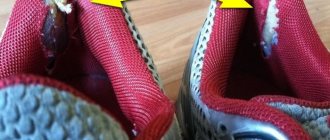When shoes squeak, it's not very pleasant. It’s easy to get rid of this problem, read the tips in the article.
Each person's gait is individual, like a fingerprint or the shape of the ear. But such a personal trait of a person can be ruined by a seemingly insignificant detail - shoes that squeak.
- When we walk down the street in such shoes, we begin to attract the attention of others.
- At the same time, I want to correct such a nuisance by walking, stepping on the foot less harshly or walking more slowly, but nothing works.
- How to get rid of squeaking shoes? What can you do to prevent leather or other shoes from squeaking? You will find answers to these and other questions in this article.
How to get rid of squeaking shoes when walking
Use materials at hand to help eliminate unpleasant sounds.
There is no need to go to a workshop for this. If, when wearing shoes, the leather surface makes a sound, then goose fat or lard mixed with wax in a ratio of 3:1 will help correct this defect.
Wipe your shoes with these products, paying attention to the threads holding the material to the sole. This way you will kill two birds with one stone: it will soften the material itself and help the seams to stretch if they were over-tightened during the shoe making process
In addition, it would be a good idea to run grease over the zipper, especially if it jams.
How to get rid of squeaking shoes when walking easily and quickly? Another folk remedy is suitable for this. Shoes or boots that make an unpleasant sound are wrapped in a damp cloth, the same one you use to wash the floor will do, and left overnight. This product will help soften the shoes, but be prepared for the fact that the nasty squeaking may return if you don't break the pair in thoroughly by then.
There may be several reasons why shoes start making unpleasant noises.
- If new shoes squeak, it is most likely a factory defect. Poor quality leather may have been used, with low flexibility, microcracks or other defects. The craftsman could have pulled the thread of the firmware or violated the gluing technology, which caused the shoes to squeak when walking.
- Creaking shoes may indicate the need for repairs. The cause may be a broken instep support, delamination or wear of the sole, sand or small stones getting into the cracks formed, etc.
- If leather shoes squeak after several months of use, this may be a consequence of improper or insufficient shoe care: neglect of special products, drying shoes on a radiator or near a heater, accumulation of moisture under the insole, etc. Patent leather shoes may squeak for the same reasons.
Whatever the reasons, the main question that worries the reader is: what to do if your shoes squeak when you walk. There are three options:
- get rid of bad shoes and buy new shoes;
- go to the workshop for help from a specialist;
- try to correct the situation at home using traditional methods.
If the warranty period has not expired, it is easier and safer to try to exchange the unsuccessful pair. At the same time, do not hesitate to walk around the store for a while in new shoes so as not to step on the same rake again. If you decide to contact a shoemaker, find a specialist you trust so as not to pay money unnecessarily. And we offer some tips on how to solve the problem using folk remedies.
You need to start getting rid of squeaking with the main thing: listen carefully and determine where the sound is coming from. If the insides of your shoes squeak, try the following methods:
- warm up your shoes or boots with a hairdryer (hot air mode), but no more than 5-7 minutes, as this procedure is not good for the skin;
- pour talc (baby powder) under the insole, spread evenly and leave for several hours;
- Check the tight fit (adhesion) of the insoles, perhaps insert new insoles.
If the leather of the product squeaks (you can check this by turning, bending, the shoes in your hands), try one of the following methods:
- Rub warm castor oil or drying oil into the leather of the shoes with a soft natural cloth and leave overnight;
- mix wax with animal fat (preferably goose fat) in a ratio of 1:3 and rub the shoes;
- Be especially careful when treating the seams on your shoes with oil or grease.
If the sole creaks:
- try placing your shoes on a damp cloth for 6-8 hours (make sure the cloth does not dry out), this helps in most cases;
- treat the outside of the sole with WD-40. This remedy, known to drivers, works great in our case;
- Rub the sole generously with paraffin.
It must be admitted that all these actions do not get rid of the squeak forever. The shoe treatment will have to be repeated periodically.
The main thing is to remember: if you carefully care for your shoes, do not leave them dirty, treat them with water-repellent agents, dry them properly and lubricate them with cream, they will please you and not make unpleasant sounds.
Useful tips to make your shoes last a long time and not squeak
Shoes
In fact, there are several tricks that help prevent shoes from squeaking when they are still new. You need to do the following:
- Rub the products with any animal fat . You can mix wax and goose fat in equal proportions and rub your shoes with this mixture. It will not crunch when worn.
- Place new leather boots with the soles on a wet rag for 8-9 hours . This method is very effective and shoes usually do not squeak after such manipulations.
- Before use, rub new shoes with special impregnations that repel water and dirt.
- Don't wear wet shoes. This applies to winter, autumn and spring. If you put on the products when they are not completely dry, then a squeaking or unpleasant crunch will certainly appear. You need to dry your shoes for at least 24 hours in a dry, ventilated area, but not near a hot radiator.
- You can order a special sole sticker from a shoe shop . It will help keep this part of the shoe and the instep from deforming, and this detail also helps prevent squeaking.
- Be sure to properly care for your shoes using special products that can be purchased at any hardware store. Every day, wash your shoes with cool water and then wipe with a dry cloth. After this, you can apply cream or other shoe cosmetics.
- Store shoes in a closed closet . Do not store dirty shoes, boots, shoes or sandals.
Carry out preventative measures with new shoes to prevent unpleasant sound. If a squeak does appear, evaluate your strength and think about whether you can fix the problem yourself, otherwise you may completely damage the product. Otherwise, contact a specialist. Good luck!
Causes of squeaking and ways to determine them
There are a dozen reasons why shoes squeak when walking. The most common are the following:
- Manufacturing defect. New shoes can squeak for various reasons: poor quality material, inappropriate thread thickness when sewing, due to cutting errors. For example, if the parts are smaller than required, their excessive tension can cause squeaking.
- Sand, small debris caught between the upper and sole parts.
- Insufficient fixation of the insole or cut elements. The defect may appear during the manufacture of shoes or during wear. A moving, sliding lining will make a grinding sound during a step, and loose sides or toes will creak due to friction.
- Damage to the instep support, a thin curved metal plate designed to attach the heel to the sole. When it breaks or becomes loose, a squeak often appears.
- Poorly nailed heel. It can squeak due to an air gap at the junction with the heel or sand and pebbles getting there.
- Humidity. Leather soaked in moisture swells, seams, cut details, and soles become tight and begin to creak due to increased friction.
- Material defects. These may be defects that are invisible to the eye, but appear over time. Insufficient or excessive hygroscopicity, elasticity, poor heat resistance, cracking.
- Inadequate shoe care. For example, drying a wet pair near heating appliances, which can lead to drying out of the material, or frequent wear, which does not allow boots or shoes to dry.
To understand why new boots or boots squeak, what part is letting you down, it’s best to put on a pair and take a few steps. Any part of the upper can make unpleasant sounds - the toe, vamp, boots, heel; bottom - heel and sole; inner - insole. The sole will give itself away if the sound appears only when it comes into contact with the floor surface. Top - on the bend or movement of the foot to the side. Lining - when sliding the foot inside. To clarify the location of the source of the squeak, you need to sequentially bend the shoes from toe to heel.
It is worth knowing what to do if your shoes squeak and the warranty period has expired, or there is no way to return them to the store. You can deal with some problems on your own. For example, replace the insole, get rid of excess moisture, or vice versa, moisten the material. In difficult cases, you will need to contact a specialist. The specialist will help with the formation of cracks in the sole, problems with heels and instep supports.
Manufacturing defect
Poorly nailed heel
Insufficient fixation of the insole or cut elements
Damage to the instep support
Preventive measures
Having figured out why shoes squeak when walking, it would also be useful to find out how to protect them from this problem. Contamination from dust, sand, soil, damage from asphalt, stones, the negative impact of temperature changes - all these circumstances have a detrimental effect on quality. The material is not spared by weather conditions - rain, snow, wind. All this leads to a deterioration in the appearance of the boots and the appearance of squeaking. In order for a pair to last longer, it should be properly cared for:
- Treat with water and dirt-repellent agents, household or professional, at least once a month.
- Use products to soften and protect the skin daily - creams, ointments.
- If the shoes are wet, let them dry for 24 hours at room temperature, without the risk of under-drying or over-drying. Wet and overdried material are equally prone to squeaking.
- When putting on, use a shoehorn to prevent the heel from creasing. You shouldn't step on it. Being deformed, it fixes the heel worse. At the same time, the heel begins to loosen and creak.
- Determine a closed space for storage, away from direct sunlight and heating devices, with low humidity. It is advisable to insert pads into the product to prevent deformation.
Finding good shoes is not easy. Therefore, if shoes or any other model begins to creak, you should not rush to buy a new product. It makes sense to try to get rid of the squeak using household or store-bought products. In difficult cases, with problems with the sole and heel, it is better to contact a specialist - this way you can painlessly extend the life of your favorite shoes, sneakers or boots.
Treat with water and dirt-repellent agents
Use ointments and shoe creams daily
Dry shoes correctly, without the threat of drying out
When putting on, use a shoehorn
Store shoes in a dark place with a last or newspaper inside to avoid deformation
Fighting moisture
Sometimes not only new, but also old favorite shoes begin to creak. This phenomenon may be caused by moisture in the materials. For example, after your last walk in the rain, you forgot to thoroughly dry your favorite pair of boots. In addition, excessive sweating of the feet can also cause an unpleasant sound. In this case, the most ordinary hair dryer will help fight imperfections. Heat the inner surface of the shoes for 10-15 minutes, then let the pair cool and repeat the procedure.
If this is a tedious process for you, pay attention to special heating insoles that can be purchased at the store. In addition, you can dry wet shoes using talcum powder or baby powder, which must be used to treat the inner surface under the insole
Paper will help get rid of moisture. To use this method, remove the insoles and stuff wads of old newspaper inside the shoes. Leave the steam for a while, then remove the wet paper and push the dry lumps inside.
If the sole squeaks
The creaking of the sole can be confused with the creaking of the insole. In this situation, it is easier to replace the insole with a new one. If the cause of the sound is a defect in the sole, you can get rid of it in several ways.
Warming up with a hairdryer
You will need to remove the insole and warm the sole inside and out. Softening the sole will help temporarily cope with the defect.
Treatment with drying oil or castor oil
Performed after heating the shoes with a hairdryer. If heat treatment does not help, soak the cloth in heated drying oil and wrap the sole of the product.
It is better to treat leather shoes or boots with cotton pads in problem areas. At the same time, do not allow drying oil to get on the outside .
It is recommended to leave the shoes for a day, lubricating them periodically.
Possible problems and errors
Problems with wheels on office chairs occur when they are used on hard surfaces. On parquet and laminate flooring, plastic rollers wear out quickly. They are more suitable for short-pile carpets. For hard floors, you should choose computer chairs with rubberized wheels.
When choosing, you should pay attention to the elasticity of the seat material. It's worth trying to sit in it
If there is a dent left after standing up from it, it is not suitable for long-term use.
Gas elevator breakdowns are most often associated with the fact that the maximum permissible load is exceeded by users
You should pay attention to this characteristic when purchasing a chair. Gas lift breakdowns and creaking may be associated with exceeding the service life
Most often, with careful use, a computer chair lasts no more than 10 years, after which the gas lift is replaced and you can continue to work in it.
Ways to get rid of squeaking shoes: video
To the question of how to get rid of squeaking shoes, there are several answers and, accordingly, methods.
- Wet cloth method. Designed for non-natural material, sneakers, ballet shoes and so on. A piece of cloth is taken, moistened, and the shoes are wrapped in it for 9 hours or overnight. This method softens the fabric. Another variation of this method is to simply place the shoes on a well-moistened rag (so that it drips) and leave them alone for the same amount of time. The disadvantage of the method is its short duration and the inability to apply to suede or nubuck shoes.
- Most patent leather shoes have soles that squeak when you walk. To eliminate this defect, the method of lubricating the inside with heated drying oil or other oil, preferably without a strong odor, works. Leave to soak and dry for about a day. Remaining oil can be easily removed with a napkin by blotting.
- If the heel squeaks in shoes or boots made of leather, treating the joint with the upper part with oil will help. If the problem is a weak arch support, only shoe workshops can help. If the heel is rubber, it is also lubricated with oil.
- Regardless of what shoes are made of, heating works well to remove squeaks. A hairdryer at the maximum temperature is placed under the sole for 7 minutes, and now you can forget about squeaky shoes for a long time.
- Products made from leather or leather substitute get rid of squeaking after lubricating the inside with animal fat (preferably goose fat). After this, you can create a warm environment by leaving your shoes near a radiator or heater for 8 hours. The fat will dry out. It will make your shoes soft. Remaining fat, so that shoes do not stain socks and feet, is removed with alcohol, but only from the inside. It also makes the material more elastic.
It is forbidden to wipe rubber shoes with alcohol, as well as fabric and suede ones.
Some general tips:
- Leather shoes creaking when walking may appear after they get wet;
- New shoes must be handled carefully and treated with shoe polish before the first exit;
- To prevent your heels from creaking or wobbling, do not take off your shoes when stepping on the heels;
- If shoes squeak after prolonged wear, which was not the case before, this may be a sign of wear.
The rubber sole squeaks when walking, what should I do?
Worn arch support
This part is located inside the heel, so you won’t be able to fix the problem yourself - you need to contact a specialist.
The heel or platform at the base has come off
- In this case, you can get rid of the squeak yourself.
- Buy quality glue with good adhesion.
- Then take a syringe and pour some glue into it.
- Now, using a syringe, pour glue into the desired place and firmly fix the shoe parts for 12-24 hours.
- You can put something heavy on top of the product or secure it with several clothespins.
- If dirt or sand gets under the sole, it means that in some place it has come unstuck from the base of the product. Find this place, clean off the dirt and glue the sole to the base as described above.
- To prevent the sole from squeaking during shoe use, you need to warm it up with a hot hairdryer for several minutes. Then bend the heated sole in different places in different directions and it will not make an unpleasant sound.
- The creaking of the sole can be removed using castor oil or drying oil. It is necessary to lubricate the internal parts of the shoes first, then move on to the external ones. If you use drying oil, take a little of it, otherwise there is a risk of ruining the product. Drying oil has a slight specific smell. After processing, leave the products alone for a day.
Microcracks in the leather of shoes
- In this case, regular shoe polish will help.
- Lubricate the surface of the skin with it. But first, wash your shoes with cool water. Then dry with a dry cloth, and only after that proceed with cream treatment.
- To prevent this from happening again, you need to properly care for your shoes - wash and lubricate them with cream every day.
Creak when walking
- Regular baby powder helps get rid of the unpleasant sound in shoes when walking. Rub the sole, outer and inner parts of the products with it. The powder removes excess moisture, thereby increasing the adhesion of the sole to the surface and the insole to the internal parts of the product.
- Regular paper napkins also help. Take out the insole and insert a napkin. Then place the insole and wear your shoes as usual, the squeak should disappear.
Tight seam threads
Rub the stitch areas with castor oil or hot wax. The threads will warm up and stretch a little, and the sound will disappear.
If these methods do not help, then you will either have to turn to specialists or stop wearing squeaky shoes and buy new ones.
The choice of products depending on the type of shoes
What do you do if your shoes squeak when you walk and wet wraps don’t help? You should use WD-40 aerosol. Its main active ingredients are white spirit, carbon dioxide and mineral oil. The composition lingers on the surface for a long time, providing lubrication that reduces friction. Apply it to a cotton or fabric swab, after which the drug is carefully distributed over the surface.
When sneakers or sneakers squeak, it may be caused by overtightened lacing. In this case, it should simply be weakened. If the sole makes an unpleasant sound, then most likely microcracks or voids formed in it are to blame. You can eliminate the squeaking of sports shoes by filling the damaged areas with colorless silicone or polyurethane glue.
If your boots or boots squeak and you don’t have any means at hand to soften the material, you can use a hammer wrapped in a cloth. They are used to carefully cut off the tops, boots, toes, and heels. In this case, it is better to put a last, crumpled newspaper, and napkins inside the shoes to avoid deformation of the parts.
When the rubber sole of a demi-season shoe squeaks, it is “treated” by heating and then kneading along its entire length. Rubber expands at high temperatures, becoming more elastic and flexible.
If your boots squeak when you walk, what professionals do is use store-bought products . There are many special formulations that can soften the skin, for example, silicone spray. It is easily and quickly absorbed into shoes without leaving marks, fills cracks, and prevents friction. At the same time, it is as safe as possible. The only precaution is not to use indoors or near fire.
Aerosol WD-40
Loosen the lacing
Glue the sole with polyurethane glue
Place a shoe last or newspaper inside the shoe and carefully hit the problem areas with a hammer
Rubber boots need to be warmed up and then worn in.
Silicone spray
The essence of the problem of squeaking shoes
Creaking sounds coming from the sole spoil the mood and put you in an awkward position in society. To avoid becoming a victim of this manufacturing defect, let's figure out why shoes squeak.
The main factors that cause squeaking sounds include:
- Irregularities in shoemaking techniques for sewing the inside of boots, sneakers, shoes and other footwear. Most often the reason is the insole. It is either glued incorrectly or poorly made from low-quality material. This defect causes creaking due to the fact that the insole moves out and rubs.
- Despite the first point, the most common reason why shoes squeak is a manufacturing defect. It consists of overly stretched seams (these are the threads that hold the component parts of the shoe to the sole). Therefore, during movement, the threads expand and then contract with sound. But don’t worry, if this is the problem, it will soon disappear. How quickly this happens depends on when the thread stretches to the desired state.
- There is no way out if seams and other parts become clogged during production with debris, sand, pebbles, etc. Foreign bodies make wearing them unbearable, and you need to start getting rid of them immediately.
- Poor quality of instep support or heel. In this case, it is easy to determine that the heel is filling with squeaking.
- Excessive moisture in shoe material. After getting wet, you may notice that the shoes squeak. Moisture from sweat, which saturates sneakers, boots and other footwear while running, also leads to a similar effect.
- A creaking sound when walking indicates a lack of quality in the material and that it has not been properly prepared for use.
- The shoes will crunch even if there are damages and blisters on the leather. This phenomenon is more characteristic of varnish models. The downside is that the more often and longer you wear them, the more the pair will creak. It is better to replace crispy shoes immediately.
- Most often, this problem is encountered by owners of leather shoes, which is not strange, because this particular material is often defective.
- Regarding well-worn shoes, the creaking area is the sole. It is already worn out and prone to shuffling noises and other unpleasant sounds.
- In contrast to moisturizing, drying is also detrimental to shoes when it is unnatural and too intense.
Loud sandals
In sandals, the characteristic sound is caused by decorative elements. Due to friction while walking, metal fittings continually touch the surface of the shoe. Try loosening the fasteners if possible. Otherwise, use the following algorithm. Lubricate all metal elements and their attachment points with Vaseline. Leave the sandals on for half a day, then remove the remaining Vaseline and try walking.
There can be many reasons for squeaking while walking. The suggested lifehacks will help eliminate the problem with annoying sound, but in difficult situations it is better to contact a workshop. There is no point in buying squeaky shoes in the hope that they will wear out. It is better to immediately choose a high-quality pair in which your feet will be comfortable.
During the hot season, comfortable shoes are especially necessary. We recommend reading 5 tips on how to prepare for summer and not empty your already thinner wallet.
Did you like the article? Then support us, click
:
Source
Why do boots start to squeak?
If for some reason the exchange of a new “singing” pair is impossible, or the boots creaked already during use, you need to determine exactly where the annoying sound is coming from. To do this, you will have to walk around the room in the problem pair, and when the boots begin to make appropriate creaking noises, lift your leg and make several rotational movements of your feet. If the “singing” continues, then the reasons are sought in the following:
- Tight lacing - strongly tightened fastenings or punched holes for laces cannot withstand the load and begin to make cracking and grinding noises;
- Defects when sewing shoes, when the tension of the threads in the ankle area does not correspond to the norm. This problem is eliminated over time, since the threads gradually relax when walking;
- The presence of dust or mud elements in the seams that crunch when rubbing against each other;
- There are microscopic damage to the skin, or the material itself is of poor quality.
If, when experimenting with rotating your foot, the unpleasant sound disappears, the problem should be looked for in the sole. There are several reasons given:
- Unreliable arch support or loose heel;
- The leather sole is dry or damaged.
And if, when a problem is found in the upper part of the product, home methods will help get rid of it, only a shoemaker can remove defects in the sole.
How to determine the main source
To determine the source of the unpleasant sound, you should dry your shoes, put them on, take 2-3 steps around the room and observe. If you cannot determine which part of the product is noisy, you need to pick it up and carefully bend it in half several times.
Sole
Defects in the production of the sole usually appear when walking on a nervous surface.
Heel
You can determine the squeaking of a heel by the unpleasant sensations that appear while walking. Usually this particular defect is difficult to confuse with another part of the shoe.
See also
How to properly stick protective glass on a tablet at home
Leather upper
If the product continues to squeak regardless of whether the foot is on a hard surface or not, the reason lies in the leather upper trim.
Threads
Also, the defect may be in the threads that were used in the manufacture of shoes. Such a product will creak even when bent by hand.
Prevention
To prevent the squeak from appearing again, try to dry and store your shoes properly. Before putting your boots in the closet, clean them of dirt, rinse and dry. Remember: during storage the leather dries out, so it should be treated with a special cream.
It is also not recommended to keep/dry shoes near radiators and other heating devices. After all, the glue may lose its “tenacity”, the skin will become dry, which will lead to squeaking.
Thus, the problem of squeaking shoes can be solved independently. If, despite all your efforts, your boots continue to squeak, consult a specialist. Sometimes only a shoemaker can discover the cause of this phenomenon.
Rubber glue
This product mainly consists of a dispersion of vulcanized rubber in an organic solvent. It is used for gluing materials. If your new rubber shoes squeak, try this technology and the squeaking will disappear.
WD-40 is an all-purpose aerosol lubricant used to lubricate doors, shoes, and locks.
This technical product can clean, lubricate and remove moisture. It contains many useful properties that many are not aware of.
How to eliminate a squeak:
- Soak a cotton swab in a small amount of WD-40 spray.
- Apply it to the external seams of squeaky items. Do not treat the inside of shoes; WD-40 can provoke unwanted allergic reactions.
- There is no need to rinse off anything; leave the shoes to dry.
WD-40 repels moisture and eliminates squeaks, but this substance is also dangerous. The product can easily ignite and it will be impossible to extinguish it with water.
Dry away from fire and heating devices.
How to get rid of a squeak
You can eliminate the annoying sound yourself at home. Depending on where the defect occurred, there are different options for processing products.
Application of heat
Old boots, boots or shoes, after getting wet repeatedly, begin to make noise when walking. The problem does not arise if the owner thoroughly dries the shoes. A defect caused by dampness is independent of the quality of the product.
It is important in such a situation to dry the wet couple well.
- Models with laces or a lock must be unlaced, the locks unfastened and placed to dry in a dry room or a special dryer.
- A hairdryer will speed up this process. You should wait until it dries completely and then check for noise.
- To speed it up, you can place wads of paper inside. If the sound occurs due to dampness, it is advisable to take care that the shoes do not get wet and are dry.
Application of moisture
The use of liquids is indicated not only for breaking in a new pair, but also for eliminating squeaking. Wrapping shoes in a cloth soaked in alcohol or water solutions is effective. Alcohol wraps soften the material. Used for new shoes that require breaking in.
- The product can be wrapped in fabric or treated with wet discs.
- After softening (several hours), the new pair must be dried.
- To consolidate the result, the procedure may need to be repeated.
Artificial materials can also be treated with moisture.
Lubrication
An effective method is to use fat, lard, and oils to process products. Unlike water and alcohol, this method guarantees a longer lasting result. The following substances are used as lubricants.
Fat and lard
It is better to use when heated, this will help soften the fabric. Acceptable for goods made from artificial and natural leather and rubber. The fat base is absorbed into the fiber, eliminating dryness and tightness.
Suitable for new and old shoes.
- It is recommended to apply goose or pork fat to the entire surface and leave until completely absorbed.
- If necessary, you can remove excess with a napkin.
- Wrapping the shoes in a cloth soaked in heated lubricant will also get rid of the unpleasant sound.
Drying oil or castor oil
Suitable for processing seams, insoles, heels.
- To do this, the oil must be heated and applied to the creaking areas.
- The shoes are pre-dried and warmed up.
Used to treat the surface of patent leather shoes.
Melted wax can be used to treat dry leather and leatherettes, and can also be used to soften seams.
To get rid of sound, you should distribute warm wax over the product with a cotton pad or rag. Leave until dry. Excess can be removed with a napkin.
Special shoe lubricant
The most effective and efficient method of dealing with squeaking. When purchasing a substance, you need to focus on the type of shoe material.
The lubricant does not require additional heating and is convenient to use. Manufacturers produce various forms of the product: in the form of a spray, shoe polish, and others.
Silicone
This method helps eliminate squeaking shoes if there is a gap between the upper part and the sole.
Silicone combines various polymers. It has properties that can eliminate unpleasant sounds. It is used to lubricate doors, locks and shoes.
How to get rid of squeaking shoes:
- Fill the resulting gap with silicone grease.
- Place a pair under a press to consolidate the result. If there is a special clamp, secure it with it. After 12 hours, remove the press.
Silicone grease should not be used on leather products. It is a bad idea. Silicone clogs the pores of the product, as a result leather shoes do not breathe and deteriorate.
Causes of squeaking
This defect is observed not only in old shoes, but also in completely new products. It affects a wide variety of shoes made from natural and artificial materials. Creaking is direct evidence that the purchased product is of poor quality. There are several reasons that explain the appearance of this defect while wearing sneakers, shoes and boots:
- Poor quality or defective material.
- At the time of production, pebbles, microparticles of earth or sand particles accidentally got into the internal parts of the product. Their presence causes a creak.
- Excessive sweating of the feet contributes to the appearance of this defect.
- Weak arch support.
- If the heel is loosely attached to the sole, squeaking may occur. In this case, it is better to contact a shoe repair shop. An experienced technician can eliminate the unpleasant sound once and for all.
- Often, squeaking occurs due to dry shoes. This applies to old, worn products made from leatherette or leather.
- An unpleasant defect is most often observed in patent leather shoes. The defect does not appear immediately, but after a while, when the product has been worn out. This problem should be eliminated as quickly as possible, as it contributes to the emergence of other, more serious difficulties. For example, swelling of the material.
- Sometimes the cause of squeaking is a poor-quality and poorly laid insole. Due to improper installation, the insole rolls from side to side while walking. It is not very comfortable to move around in such shoes.
- Incorrect tailoring. If the thread used to connect the upper to the sole is too tight, squeaking sounds will occur. In most cases, this phenomenon is temporary. As you wear the shoe, the thread stretches. The defect disappears on its own.
- If previously wet shoes or boots are poorly dried, squeaking may occur.
What causes the heel, sole, platform, leather of shoes to squeak: reasons
Shoes
Often the cause of squeaking shoes is not only the manufacturer. Shoes may begin to make an unpleasant sound during use. Here are several reasons why the heel, sole, platform, or leather of the shoe may creak:
- The heel may make a characteristic sound due to the fact that the instep support has become unusable.
- The platform usually squeaks at the base where it connects to the top of the shoes, boots or boots. This happens due to the fact that it has come off in some place. Friction occurs and sound appears.
- The sole may begin to creak from wear. Its material became unusable during wear; dirt, sand and other small particles got inside, between the sole and the top of the product, and therefore a squeak appeared.
- The leather of the shoe may begin to creak due to increased humidity inside the product. Wet parts inside the shoes rub against each other and make a characteristic sound. Shoes, boots or boots that are soaked with foot sweat may also squeak.
Many of these problems can be fixed. Read about it below.
Universal methods to combat squeaking shoes
There are several most common methods that will help get rid of squeaks and various noises.
1. Sneakers, sneakers and other sports shoes. Here there is one simple recommendation: you need to take a wet cloth and put it inside your shoes overnight. The essence of the method is that moisture will help soften the shoes, so they will stop making various sounds.
2. Varnished material. If the shoes are patent leather, then the struggle is a little more difficult. It is necessary to wipe the front side with castor oil or heated drying oil. You can use other oils, as long as they are natural. After using the oil, you need to let the shoes sit for about a day so that it is completely absorbed. If after a day the oil still remains, you can safely remove it with a cloth or napkin.
3. Replacing insoles. Often the reason is trivial, and simply replacing insoles can solve the situation if squeaking occurs when walking. If the replacement does not help, then you will have to take the furniture to the workshop.
4. High temperature can help get rid of squeaking. It is enough to warm the soles of the shoes with a hairdryer for several minutes. If your shoes start to squeak in winter, you can safely put them on heating radiators for several hours.
5. If leather shoes squeak, just soften them. Now there are many universal products that can be bought in the store, the main thing is that everyone can choose the best one for themselves.
Creaking shoes is not a big deal. However, it is necessary to identify the problem; only in this case can we talk about an effective fight.
Reproduction of this material is prohibited.
Heel problems
Dealing with a squeaky heel on your own is much more difficult. Only repairs in a workshop can restore its former stability. If the problem is a low-quality heel, cover it with an adhesive plaster, but it is best to replace it with a new one.
You can only deal with deformed seams or roughened material in the heel area on your own:
1. Wet a rag and wrap it around your heels overnight.
2. Lubricate the area where the heel connects with the heel with oil (olive, Vaseline, sunflower, coconut, etc.), any fat or WD-40. Next, heat this area with a hairdryer for 5 minutes, and after 10 hours, walk.
How to remove squeaky boots
Add a little simple shampoo or 1-2 tablespoons of vinegar to the water, moisten flannel or other natural fabric (two pieces) in it, wring it out and wrap each item of the pair separately. They do this at night, and evaluate the result in the morning. When only the sole requires softening, the cloth is not wrung out after wetting, but folded into 3-4 layers, laid out on a flat surface, and the problematic shoes are placed on top.
Squeaking can come from wet shoes, but drying them with hot heat is not recommended. If you don’t have time to wait for the pair to dry at room temperature, you can blow the shoes with a hairdryer, setting the heat to medium - this air should not burn, otherwise irreparable damage will be caused to the boots. This method is not suitable for delicate pile materials or reptile skin. The owner of an expensive pair should have a stock of electric dryers that warm up the shoes from the inside.
Folk remedies
Patent leather shoes or boots made of smooth leather may squeak due to improper storage or in the first days after purchase, which also indicates that the temperature conditions in the warehouse are not maintained. It is not recommended to treat the glossy surface on top, and the inside of the shoe frame should be lubricated with any oil without a pronounced odor - castor, coconut or Vaseline. Ordinary drying oil will also work, but unlike oils, which should be applied for 8 hours, the drying oil is left for a day, and then the excess is blotted with a soft cloth.
- In order for the insole to stop crunching, you need to take it out and sprinkle it with talcum powder on the side on which it is adjacent to the sole of the boot. Dry antiperspirant and soap shavings (dry) will also help;
- Squeaky boots become softer after being treated with wax, combined with goose fat (part wax to three parts fat). Before preparing the mixture, both components are brought to a liquid state in a water bath and then combined and coated with the entire surface of the boots;
- Any liquid vegetable oil or lard will help get rid of a new heel from squeaking. The substance is applied to the heel with a cotton pad and rubbed in for a minute.
Imperfection of the material
New shoes can produce unwanted sounds not only due to manufacturing defects, but also due to poor quality raw materials. Bad material is the main reason why leather shoes squeak. In this case, it will be very difficult to get rid of the nasty sound.
In addition, shoes can squeak due to defects in the heel or sole. In this case, it is better to return the defective pair to the store. If this cannot be done, then take the boots or shoes to a shoe repair shop. A shoemaker will help you get rid of such troubles.
